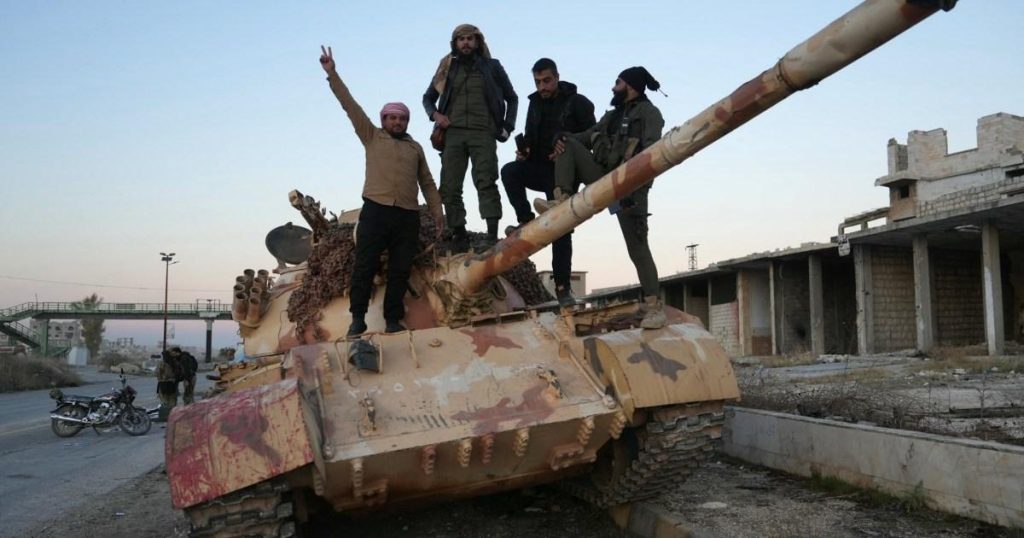The Fall of Assad: A Sudden Shift in Syria’s Power Dynamics
The unexpected collapse of Bashar al-Assad’s regime in Syria, following a rapid offensive by rebel forces led by Hayat Tahrir al-Sham (HTS), marks a dramatic turning point in the country’s protracted 13-year civil war. This swift and surprising victory has sent shockwaves across the globe, raising questions about the future of Syria and the potential implications for the broader Middle Eastern landscape. Assad’s flight to Moscow, after 24 years in power, underscores the rebels’ decisive triumph and the fragility of his once seemingly unbreakable grip on the nation. The ascension of HTS, a group with complex roots and a controversial past, introduces a new layer of uncertainty into the already volatile situation.
HTS: From Al-Qaeda Affiliate to Dominant Force
HTS, formerly known as the Nusra Front, carries a complex legacy. Originating as an al-Qaeda affiliate during the initial stages of the Syrian uprising, the group has undergone a significant transformation in recent years. Led by Abu Mohammed al-Golani, HTS has sought to distance itself from its extremist origins, rebranding itself and emphasizing its focus on Syrian national interests. This strategic shift included severing ties with al-Qaeda in 2016 and engaging in efforts to present a more moderate image to the international community. Al-Golani’s 2021 interview with PBS, in which he disavowed any intention of attacking the West, further exemplifies this attempted rebranding. Despite these efforts, HTS remains designated as a terrorist organization by the US and UK, raising concerns about its future actions and potential impact on the region.
The Syrian Civil War: A Complex and Devastating Conflict
The Syrian civil war, which erupted in 2011 amidst the Arab Spring uprisings, evolved into one of the most intricate and devastating conflicts of the 21st century. The initial peaceful protests against Assad’s authoritarian rule were met with brutal repression, sparking a descent into armed conflict. The war’s complexity is rooted in the diverse ethnic and religious composition of Syrian society, with Sunni Muslims, Shiites, Alawites, Druze, and Christians all vying for influence and protection. This complex tapestry of identities and interests created a fertile ground for internal conflict, exacerbated by external intervention from global powers. The war resulted in the deaths of over 300,000 people and displaced millions more, creating a humanitarian crisis of immense proportions.
Russia’s Role: A Key Player in the Syrian Conflict
Russia’s intervention in the Syrian conflict, commencing in 2015, proved pivotal in bolstering Assad’s regime. Under President Vladimir Putin’s leadership, Russia provided crucial military, political, and economic support to Damascus. Russian air power played a decisive role in weakening opposition forces, shifting the balance of power in favor of Assad. Moscow’s involvement was driven by strategic interests, including maintaining its naval base in Tartus and projecting influence in the Middle East. Russia’s granting of asylum to Assad and his family following the rebel victory further underscores the close ties between the two nations.
The Uncertain Future of Syria: Challenges and Opportunities
The rapid fall of Assad’s regime presents both challenges and opportunities for Syria. While the end of his rule could potentially pave the way for a more democratic future, the rise of HTS raises concerns about the potential for extremist ideologies to gain further traction. The country remains deeply fractured, and the task of rebuilding after years of devastating conflict will be immense. The international community faces a complex dilemma in determining how to engage with the new power dynamics in Syria. Balancing concerns about HTS’s past with the need to address the humanitarian crisis and promote stability will require careful diplomacy and a nuanced approach.
Navigating the Aftermath: A Complex Path Forward
The rebel victory in Syria opens a new chapter in the country’s tumultuous history. The focus now shifts to the arduous task of rebuilding and reconciliation. The international community must grapple with the challenge of engaging with the new leadership while addressing the urgent humanitarian needs of the Syrian people. The long-term stability of Syria will depend on the ability of all stakeholders to find common ground and work towards a peaceful and inclusive future. The coming months and years will be crucial in determining the trajectory of the country and the lasting impact of this dramatic turn of events.


